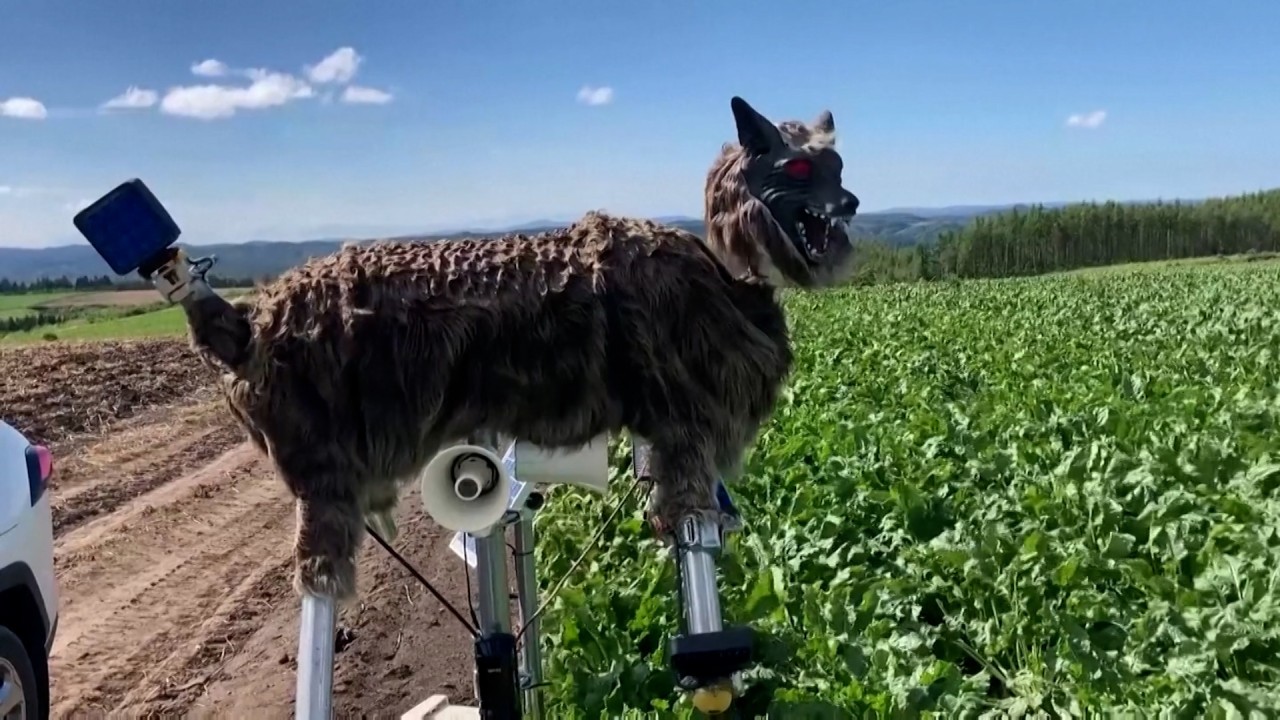
As Japan reports 13,600 bear sightings, why are they coming out of the wild?
- A lack of food, with low acorn yields this year, may have driven the bears closer to civilisation, one expert says
- The coronavirus pandemic, which has seen people stay indoors more often, could also be leading the animals to enter human habitats
The 56-year-old man escaped with just a scratch, but about 10 minutes later, the same bear fractured the leg of another worker at a nearby construction site.
Four days before that incident, a male bear entered a four-storey shopping centre in neighbouring Ishikawa prefecture. The 1.3-metre-tall bear holed up in a storage room for 13 hours, until it was shot by a local hunting group.
“We have received an unprecedented number of reports of bear sightings this year in Kaga,” said Yukio Yamagishi, a director at the city’s Agriculture, Forestry and Fisheries Division.

01:00
Bear scare: ‘monster wolf’ robots protect Japanese towns from hungry marauding bruins
Between April and September this year, wild bears were spotted 13,670 times across Japan, the most over a six-month period in the last five years, data from the environment ministry showed. In many northern regions, the number of reported bear sightings reached the highest in over a decade.
There are multiple factors behind the increased number of bear sightings, according to Shinsuke Koike, an associate professor of ecology at the Tokyo University of Agriculture and Technology and deputy representative of the Japan Bear Network, which runs lectures and studies on promoting the coexistence of bears and humans.
Oak trees alternate each year between heavy and low production of acorns, a staple food for bears. This was a bad year for acorn yields, and the lack of food may have driven the bears closer to civilisation. With the younger generation moving to the cities, ageing residents are unable able to harvest crops or fruits grown in their gardens, which tempt starving wild animals.
Human flesh, hair found inside Japan bear after fatal attacks
The coronavirus outbreak may also have affected the bears’ behaviour, Koike said. Japan declared a nationwide lockdown from April to May, with many stores and factories shortening their operating hours and people strongly encouraged to stay home.
“Bears might have expanded their areas of activities after not seeing humans around during spring and early summer season,” he said.
In some cases, the bears leave damaged property in their wake. Yuki Tasei grows expensive grapes called shine muscats on his fruit farm in Takahata, Yamagata prefecture.
Boy, 7, vanishes in bear-infested Hokkaido wilderness after parents punish him
Bears ate up as much as 40 kilograms of his crop in October, causing 100,000 yen (US$963) of damages. “It was [the] first time we had bear attacks,” he said.
Bears caused on average 426.7 million yen in crop damage per financial year from 1999 to 2018, according to government data. Around 572 hectares of forest were destroyed on average annually over the last five financial years, including when bears stripped the bark off trees as they foraged.
The transport sector has also had run-ins with wildlife from the mountains. “Many wild animals jump in front of running trains every year,” said Shoriki Yamazaki, a spokesman of the Kanazawa Branch of JR West.
According to the rail company’s data, there were 224 cases of trains getting delayed for more than 10 minutes in the last six financial years due to collisions with wild animals in the Fukui area.
Can we keep it? Tokyo begs China to let beloved pandas stay
Some local companies are now seeking solutions to keep bears away from residential areas. Hokkaido-based Ohta Seiki has a patent pending for its mechanical “Monster-Wolf”, which emits 90-decibel roars and moves its neck just like the bears’ predator.
The company says about 70 “wolves” have been purchased by Japanese farmers in the last three years.
Koike, the professor, suggested a more benign tactic. “It’s important to draw a clear boundary between human and bear areas, by trimming the lawn or removing attractions for bears including unharvested fruits or food waste, so that bears can distinguish their home and won’t mistakenly enter where humans live,” he said.

